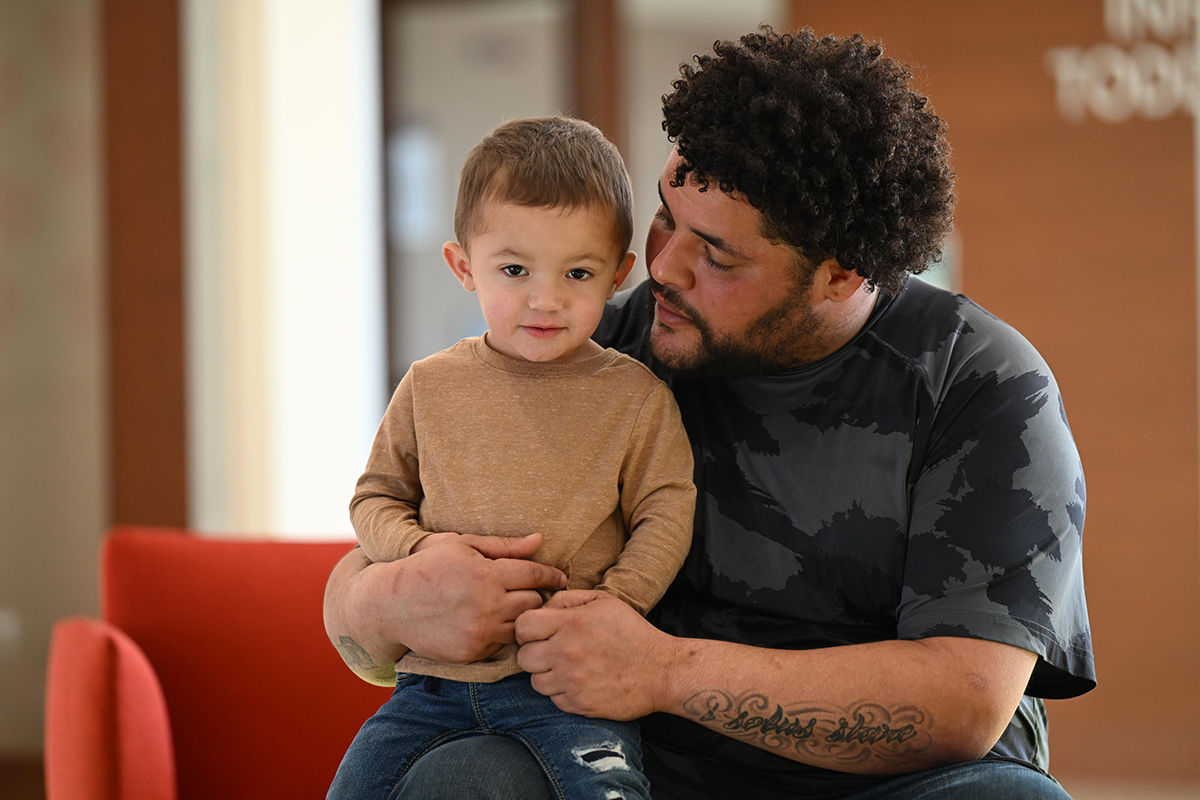Identifying Need, Building Strategy to Support Families

By Lindsay Knepp, Family Partnership Manager at Catherine Hershey Schools for Early Learning
Every year, early childhood professionals get together to hear new ideas, share learnings, and make connections at The Pennsylvania Child Care Association Early Childhood Education Summit. This year, the theme was “From Surviving to Thriving: Tools to Support Early Childhood Education”, and Catherine Hershey Schools for Early Learning (CHS) was excited to run a workshop on identifying needs and building strategies to support families.
As early childhood specialists, we are acutely aware that child development and learning occur in multiple contexts, including family, culture, language, community, as well as the early learning setting. It’s important to remember that we are all operating within the broader societal context— and that includes structural inequities.
As the Family Partnership Manager at CHS, it’s my role (and my privilege) to work with families by taking a whole-child and family success approach, which allows us to come alongside families to identify long-term goals for both the family and child and work toward them. At CHS, we firmly believe that connecting families to resources and community programs (such as parenting and educational information, health care referrals, and job training) promotes overall family health and enables long-term success not just for the child but for the whole family.
This is a subject close to my heart, and along with CHS’ Executive Director, Senate Alexander, we were excited to be able to share our approach to breaking down potential barriers to family engagement, creating culturally responsive and community-based solutions to improve whole-child outcomes and a growing understanding of the professional standard for family-teacher partnerships and community connections.
And these barriers can be formidable. During the conference session, participants shared their experiences as early learning professionals (including teachers and professional development trainers) and discussed both the unique and shared challenges each program faces. In turn, we also shared some ways that the participants can apply their knowledge of child development to provide scaffolds that make learning achievable within the family’s context and community.
Identifying Barriers
Firstly, it’s important to categorize barriers and assess the needs they create. For example:
- Lack of resources, such as transportation, social supports, time, or childcare, to meet the needs of the goal.
- Lack of executive functioning skills — perhaps the family can share a goal or dream, but to make it a reality, they need support to help them get there.
- Living in crisis — when a family is living from a stressful situation to a stressful situation, it requires a change in thinking to work toward a goal.
- When you do not know where your next meal is coming from, working on a goal is a large step. Taking the time to support and meet basic needs will assist the family in reaching these goals.
- While, as educators, we want to focus on the Bloom model, sometimes, we need to focus on Maslow. Put simply, a child’s basic needs should be prioritized before educational attainment.
Building Structures
When working with children and families, there are many ways to provide support to help the families grow. It’s important for early childhood educators to come alongside the families to mentor, coach, guide, and empower them to be leaders and advocates for their children. This advocacy role will enable families to support their children throughout their educational journey and beyond. Academically
Home visiting is a way to build a strong partnership and relationship with the family. Being able to support in the home allows the two-generation work to happen and the teaching to occur in the natural environment.
Practicing the social-emotional skills a child has learned in the classroom in the home setting with the parents is a way to change how households respond to stressors.
Intensive parenting programs that are evidence-based allow parents to obtain the skills needed to provide safe and stable homes, as well as build resiliency when a situation is difficult.
It’s vital to strategically support populations that are more likely to be isolated, such as single fathers, teen parents, and those for whom English is a second language. While parenting takes many different forms, positive parenting practices work well across diverse families and in diverse settings to provide children with what they need to be happy and healthy and to grow and develop well.
During the workshop, we reached a key realization: those of us who work in early childhood programs have a unique and incredible opportunity to develop a warm and welcoming approach to families to support relationship building, which allows children to grow, families to build relationships, community to be established, and collaboration to be fostered.
And community is our lifeline. We cannot do this work alone (and we took time during our session to share the strains and pressures we ourselves face) but working with the community to build partnerships and connect families with the resources needed to improve their situation can decrease stress, abuse, neglect, and improve stability in the home and in children’s lives.
Yes, there are many barriers. But there are also many solutions to ensure that, together, we can help build the scaffolds to support healthy families and healthy families grow, learn, and change trajectories for everyone.




